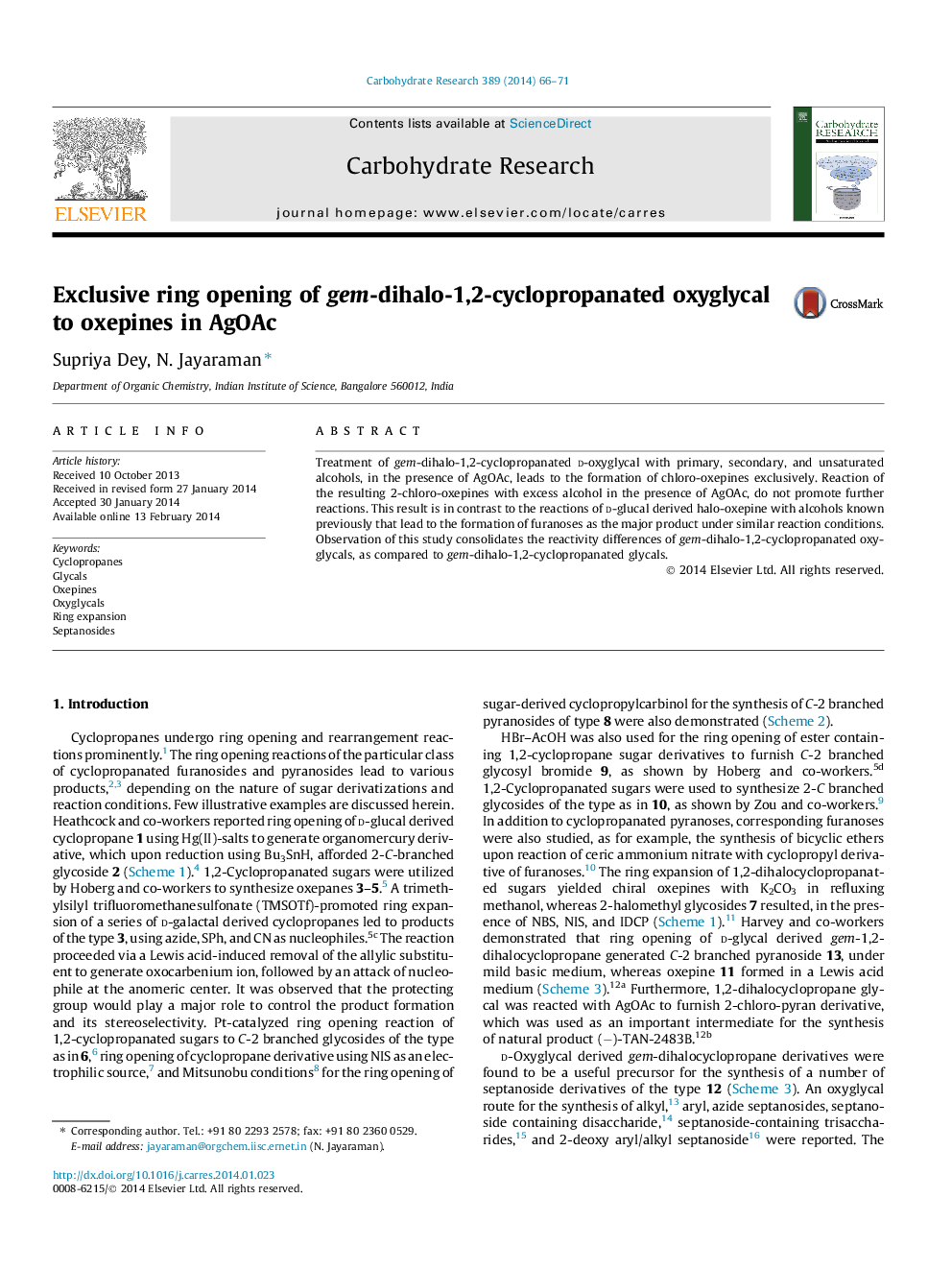| کد مقاله | کد نشریه | سال انتشار | مقاله انگلیسی | نسخه تمام متن |
|---|---|---|---|---|
| 1387654 | 1500862 | 2014 | 6 صفحه PDF | دانلود رایگان |

• Ring-opening of gem-dihalo-1,2-cyclopropanated oxyglycals to chloro-oxepines is reported.
• AgOAc mediated ring opening leads to formation of chloro-oxepines, exclusively.
• Isomerization of C2–C3 double bond to C1–C2 is the key for rearrangement in halo-oxepines.
• Oxy-substituent at C-3 generates more substituted C2–C3 double bond.
• The more substituted C2–C3 double bond prevents further rearrangement.
Treatment of gem-dihalo-1,2-cyclopropanated d-oxyglycal with primary, secondary, and unsaturated alcohols, in the presence of AgOAc, leads to the formation of chloro-oxepines exclusively. Reaction of the resulting 2-chloro-oxepines with excess alcohol in the presence of AgOAc, do not promote further reactions. This result is in contrast to the reactions of d-glucal derived halo-oxepine with alcohols known previously that lead to the formation of furanoses as the major product under similar reaction conditions. Observation of this study consolidates the reactivity differences of gem-dihalo-1,2-cyclopropanated oxyglycals, as compared to gem-dihalo-1,2-cyclopropanated glycals.
Figure optionsDownload as PowerPoint slide
Journal: Carbohydrate Research - Volume 389, 7 May 2014, Pages 66–71